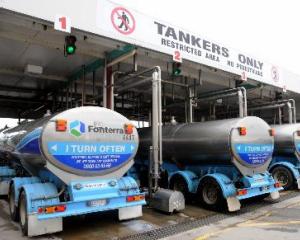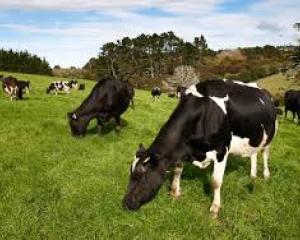Economic uncertainty and the start of a new European dairy season saw milk powder prices fall nearly 14% in Fonterra's monthly internet auction on Tuesday night, a trend that could continue for the next few months.
It was the third successive monthly decline in prices, which Fonterra's globalDairyTrade manager, Paul Grave, said reflected market volatility and a shift in concerns in the market for dairy products from supply to demand factors.
The auction's trade-weighted index (TWI) slipped 13.7% this week compared with the June sale, with prices for anhydrous milk fat falling 14.1%, skim milk powder 11.8% and whole milk powder 14.8%.
Mr Grave said such volatility was to be expected, as buyers had been worried about a shortage of product because of the North Island drought, lower dairy volumes from Australia and a slow start to the European season.
Those concerns had abated and the volatility was now based on the strength and speed of the world economic recovery.
"Supply concerns of recent months have eased and the focus is now very much on demand," he said.
In June, the TWI slipped 3.5%, after a 0.8% drop in May, on the back of whole milk powder prices falling 3.4% and 1.2%, skim milk powder easing 6.2% and 1.4% and anhydrous milk fat lifting 5.9% and 4.4% in June and May respectively.
In April, prices for all three products had lifted between 21% and 25.5%.
Mr Grave said prices paid at future auctions would be driven by the confidence buyers had in the economic recovery, adding there was some concern key economies could be falling back into recession, which tempered demand.
"The reality is nobody wants to be on the wrong side of a volatile market."
Fonterra was selling forward product from New Zealand's next dairy season, and prices for long-term contracts were lower than short-term contracts, he said.
Holding auctions every two weeks, which was planned from September, should provide more price clarity and arrest such wild swings, he said.
Mr Grave said while the European dairy season was now in full swing, production in the United States was stable.
But such was the size of the US dairy industry, a small percentage increase or decrease in milk flow would result in significant changes in volumes of product.






